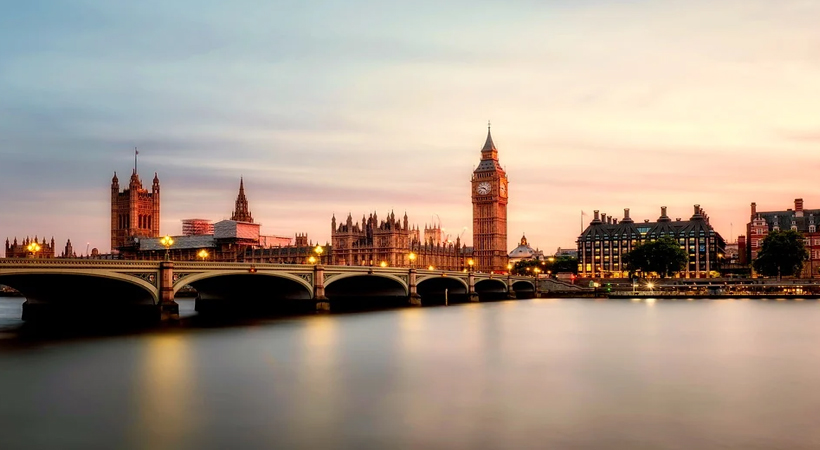Travel safely during the coronavirus outbreak – this is how

This guide by the British government will help you understand how to travel safely during the coronavirus (COVID-19) outbreak. It provides guidance for walking, cycling, using private vehicles (for example cars and vans), and travelling by taxis and public transport (for example trains, buses, coaches and ferries).
You should avoid using public transport where possible. Instead try to walk, cycle, or drive. If you do travel, thinking carefully about the times, routes and ways you travel will mean we will all have more space to stay safe.
Is your journey necessary?
To help keep yourself and your fellow passengers safe, you should not travel if you:
- are experiencing any coronavirus symptoms
- are self-isolating as a result of coronavirus symptoms
- are clinically extremely vulnerable
Before you travel, consider if your journey is necessary and if you can, stay local. Try to reduce your travel. This will help keep the transport network running and allow people who need to make essential journeys to travel. You can reduce your travel by:
- working from home where possible
- shopping less frequently and shopping locally
Face coverings
You should wear a face covering while travelling, as set out in this guidance.
A face covering should cover your mouth and nose while allowing you to breathe comfortably. It is important to use face coverings properly and wash your hands before putting them on and after taking it off.
How to wear a mask
Some people may not be able to wear a face covering, for example young children, people with breathing difficulties and people whose disabilities makes it difficult for them to wear a face covering.
You should be prepared to remove your face covering if asked to do so by police officers and police staff for the purposes of identification.
A face covering is not the same as the surgical masks or respirators used by healthcare and other workers as part of personal protective equipment (PPE). These should continue to be reserved for those who need them to protect against risks in their workplace, such as health and care workers, and those in industrial settings, like those exposed to dust hazards.
The evidence suggests that wearing a face covering does not protect you, but it may protect others if you are infected but have not yet developed symptoms.
Walking and cycling
Walking and cycling will reduce pressure on the public transport system and the road network. Consider walking and cycling if you can. Local cycling schemes can be used. Your local council can help you plan your journey by providing maps showing dedicated paths and routes.
Where possible, try to maintain social distancing when you walk or cycle, for example when approaching or passing other pedestrians or waiting at crossings and traffic lights.
Where using bikes (private, docked or dockless) wash your hands for at least 20 seconds or sanitise your hands before and after cycling.
Public transport
Plan your journey
Consider all other forms of transport before using public transport.
Before and during your journey, check with your transport operator for the latest travel advice on your route: bus, coach, tram, ferry
Travel may take longer than normal on some routes due to reduced capacity and social distancing measures. Allow sufficient time if your journey involves changes between different forms of transport.
Plan ahead by identifying alternative routes and options in case of unexpected disruption.
If you can, travel at off-peak times. Your transport operator can advise on off-peak times. Your employer may agree alternative or flexible working hours to support this.
Where possible, book your travel online through your transport provider’s ticketing app or website. Consider contactless payment to buy tickets.
Taking a less busy route and reducing the number of changes (for example between bus and train) will help you keep your distance from others. Public Health England recommends keeping a 2-metre distance from other people where possible. Where this is not possible you should keep the time you spend near others as short as possible and avoid physical contact.
Try to start or end your journey using a station or mode of transport you know to be quieter or more direct. For instance, walk the first or last mile of your journey, or alight at an earlier station, where this is possible.
What to take with you
You should wear a face covering on public transport. Minimise the luggage you take.
On your journey
Some routes may be busier than usual due to social distancing measures or changes to previous timetables or schedules. Keep your distance from people outside your household. The key thing is to not be too close to other people for more than a short amount of time, as much as you can.
There may be situations where you can’t keep a suitable distance from people, for example when boarding or alighting on busier services, at busier times of day and when walking through interchanges. In these cases, you should avoid physical contact, try to face away from other people, and keep the time you spend near others as short as possible.
You should wear a face covering on public transport. You should be prepared to remove your face covering if asked to do so by police officers and police staff for the purposes of identification.
Be aware of the surfaces you touch. Be careful not to touch your face. Cover your mouth and nose with a tissue or your elbow when coughing or sneezing.
Treat transport staff with respect and follow instructions from your transport operator. This may include:
- notices about which seats to use or how to queue
- additional screens, barriers or floor markings
- requests to board through different doors or to move to less busy areas
Help keep yourself, other passengers and transport staff safe:
- wait for passengers to get off first before you board
- ensure you maintain social distancing, where possible, including at busy entrances, exits, under canopies, bus stops, platforms or outside of stations
- be prepared to queue or take a different entrance or exit at stations
- wait for the next service if you cannot safely keep your distance on board a train, bus or coach
- respect other people’s space while travelling
- avoid consuming food and drink on public transport, where possible
- be aware of pregnant, older and disabled people who may require a seat or extra space
- be aware that some individuals may have hidden disabilities
Seek assistance if you need it
If you require assistance when travelling and would normally contact your transport operator ahead of time, continue to do so.
If any problems arise or you feel ill during your journey, speak to a member of transport staff. In the case of an emergency, contact the emergency services as you normally would.
If you need help, maintain a short distance from members of staff, where possible. If this isn’t possible, you should try to avoid physical contact and keep the time you spend near staff as short as possible.
Children on public transport
Where travel is necessary, consider whether children could walk or cycle, accompanied by a responsible adult or carer, where appropriate.
Social distancing applies to children as well as adults. Children should keep their distance from others who are not in their household, where possible. If this isn’t possible children should avoid physical contact, face away from others, and keep the time spent near others as short as possible.
If you are the responsible adult or carer travelling with children, please help them follow this guidance, wear face coverings, minimise the surfaces they touch and maintain their distance from others, where possible.
Children under 3 years old are not recommended to wear face coverings. Some children may not be able to wear a face covering. For example children with breathing difficulties or children whose disabilities make it difficult for them to wear a face covering.
Schools may have additional guidance in place for children on transport which we recommend you follow.
Completing your journey
When finishing your journey, we recommend you:
- consider walking or cycling from the station or stop you arrived at
- follow local guidance
- wash your hands for at least 20 seconds or sanitise your hands as soon as possible – do the same for children within your care if they have travelled
Taxis and private hire vehicles
At taxi ranks try to keep your distance from people outside your household, where possible. Public Health England recommends 2-metre distance from others.
Taxi and private hire vehicle (for example minicab) operators are likely to have put in place new measures to help with social distancing. When traveling in taxis or private hire vehicles follow the advice of the driver. For example, you may be asked to sit in the back left hand seat if travelling alone. You may want to check with your taxi operator before travelling if they have put any additional measures in place.
If you need to be near other people you should avoid physical contact, try to face away from other people, and keep the time you spend near other people as short as possible. Be aware of the surfaces you or others touch.
You should wear a face covering in an enclosed space where social distancing isn’t possible and where you will come into contact with people you do not normally meet.
When finishing your journey, we recommend you:
- follow local guidance
- wash your hands for at least 20 seconds or sanitise your hands as soon as possible
Private cars and other vehicles
Plan your journey
Plan your route, including any breaks, before setting out. Routes may be different as local areas make changes to enable social distancing on pavements and cycle routes.
If you normally share a vehicle with people from other households for essential journeys, we recommend you find a different way to travel. For example, consider walking, cycling or using your own vehicle if you can.
If you have to travel with people outside your household group, try to share the transport with the same people each time and keep to small groups of people at any one time.
You should wear a face covering in an enclosed space where social distancing isn’t possible and where you will come into contact with people you do not normally meet.
Check if your vehicle is safe and roadworthy.
On your journey
If driving, you should anticipate more pedestrians and cyclists than usual, especially at peak times of day. Allow other road users to maintain social distance, where possible. For example, give cyclists space at traffic lights.
Limit the time you spend at garages, petrol stations and motorway services. Try to keep your distance from other people and if possible, pay by contactless mode. Wash your hands for at least 20 seconds or sanitise your hands when arriving and leaving.
Be aware of the surfaces you or others touch. If people from different households use a vehicle (for example through a car share scheme), you should clean it between journeys using gloves and standard cleaning products. Make sure you clean door handles, steering wheel and other areas that people may touch.
Where people from different households need to use a vehicle at the same time, good ventilation (keeping the car windows open) and facing away from each other may help to reduce the risk of transmission. Where possible, consider seating arrangements to optimise distance between people in the vehicle.
If you are in close proximity to people outside your household, you should:
- avoid physical contact
- try to face away from them
- keep the time you spend close to them as short as possible
Completing your journey
When finishing your journey, we recommend you:
- follow local guidance
- wash your hands for at least 20 seconds or sanitise your hands as soon as possible



